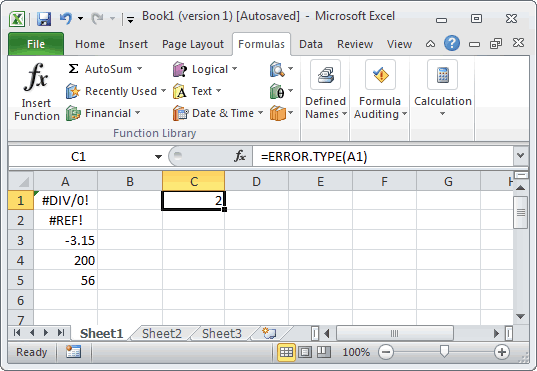
MS Excel: How to use the ERROR.TYPE Function (WS)
This Excel tutorial explains how to use the Excel ERROR.TYPE function with syntax and examples.
Description
The Microsoft Excel ERROR.TYPE function returns the numeric representation of one of the errors in Excel.
The ERROR.TYPE function is a built-in function in Excel that is categorized as an Information Function. It can be used as a worksheet function (WS) in Excel. As a worksheet function, the ERROR.TYPE function can be entered as part of a formula in a cell of a worksheet.
Syntax
The syntax for the ERROR.TYPE function in Microsoft Excel is:
ERROR.TYPE( error_value )
P arameters or Arguments
- error_value
-
An error value in Excel. It can be one of the following values:
error_value Returned #NULL! 1 #DIV/0! 2 #VALUE! 3 #REF! 4 #NAME? 5 #NUM! 6 #N/A 7 #GETTING_DATA 8 All other values #N/A
Returns
The ERROR.TYPE function returns a numeric value between 1 and 8 or the #N/A error (see table above for values returned).
Applies To
- Excel for Office 365, Excel 2019, Excel 2016, Excel 2013, Excel 2011 for Mac, Excel 2010, Excel 2007, Excel 2003, Excel XP, Excel 2000
Type of Function
- Worksheet function (WS)
Example (as Worksheet Function)
Let's look at some Excel ERROR.TYPE function examples and explore how to use the ERROR.TYPE function as a worksheet function in Microsoft Excel:

Based on the Excel spreadsheet above, the following ERROR.TYPE examples would return:
=ERROR.TYPE(A1) Result: 2 =ERROR.TYPE(A2) Result: 4 =ERROR.TYPE(A3) Result: "#N/A"
Advertisements



